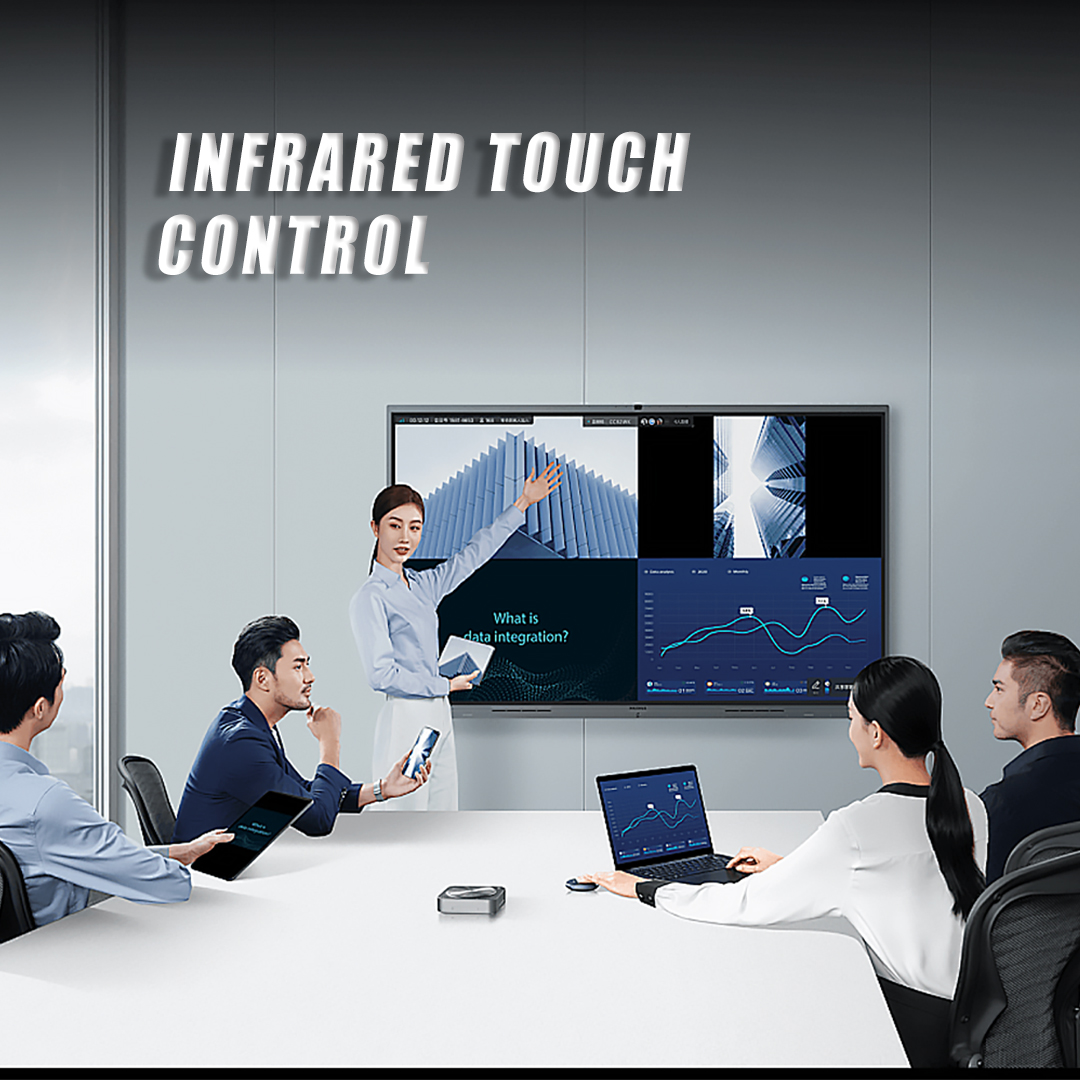
Mr. zptouch01
Leave a message Mr. zptouch01
Mr. zptouch01
Mr. zptouch01
Leave a messageThe Digital whiteboard has the following functions:
Teaching content display function:
1. Multimedia display:
1. It can display teaching courseware in a variety of formats, such as PowerPoint, PDF files, etc. Teachers can open these courseware directly on the interactive whiteboard for classroom, and perform operations such as turning pages, zooming in, zooming out, etc., so that students can view the text, charts and other content in the courseware.
2. Able to play video and audio materials. For example, the audio of the recitation of the text is played in the Chinese class, so that students can better feel the rhythm of the language; Show videos of the experimental process in science class to enhance students' understanding of abstract knowledge.
2. Document annotation and writing:
1.Teachers can annotate documents (e.g., e-textbooks, academic papers, etc.) directly on the display. For example, write a note on the derivation process next to a mathematical formula, or mark key people and times in the description of historical events. These annotations can be handwritten text or simple graphics (such as arrows, circles, etc.) to guide students' attention to important knowledge points.
2. Both teachers and students can use an electronic pen or finger (if the electronic whiteboard supports touch) to write on the electronic whiteboard. This is very useful for classroom practice, on-the-spot questioning, and other scenarios. For example, in an English class, teachers can invite students to come to the whiteboard to spell words or write sentences, and correct writing mistakes on the fly.

Interactive teaching features
1. Interactive games and activities:
1. Many smart whiteboards come with or support the installation of educational interactive game software. For example, in a math class in the lower grades of primary school, students can learn about numbers and shapes through math jigsaw puzzles. In the language learning class, there are interactive games such as word guessing to increase students' interest and participation in learning.
2. Be able to carry out group competitions. Teachers can divide students into small groups and conduct activities such as quizzes and knowledge competitions through the whiteboard. For example, in the geography knowledge competition, students in each group can click on the options on the whiteboard to answer the questions, and the whiteboard can display the scores of each group in real time, stimulating students' sense of competition and teamwork spirit.
2. Real-time feedback and voting
1. Teachers can use the Smart Whiteboard to conduct classroom quizzes and get instant feedback on students' answers. For example, by setting multiple-choice questions, fill-in-the-blank questions and other question types, after students submit their answers, the whiteboard can quickly count the answers, and teachers can adjust the teaching progress and focus according to the feedback data.
2.Polls can be initiated. For example, when discussing a class activity plan, the teacher can list several options on the whiteboard, so that students can quickly understand students' opinions and tendencies by clicking on the vote, and promote the process of democratic decision-making.

Teaching resource integration function:
1. Network resource access
1. The smart whiteboard can be connected to the Internet, and teachers can access online educational resources directly on the whiteboard. For example, in an art class, teachers can open an online museum website and display various works of art; In computer lessons, visit the programming learning site for students to learn code samples live.
2. Teaching resources can be integrated with cloud storage. Teachers store teaching materials (such as teaching videos, practice problems, etc.) in the cloud in advance, and easily call these resources through the smart whiteboard in the classroom to achieve resource sharing and efficient utilization.
2. Connect with other devices
1. It can connect with teachers' computers, tablets, smartphones, and other devices. Teachers can cast teaching materials (such as individually created teaching animations) from their own devices to the smart whiteboard. You can also receive content from student devices, such as assignments completed by students on mobile devices, for easy class commentary.
Previous: What is a 4K PC camera?

Privacy statement: Your privacy is very important to Us. Our company promises not to disclose your personal information to any external company with out your explicit permission.

Fill in more information so that we can get in touch with you faster
Privacy statement: Your privacy is very important to Us. Our company promises not to disclose your personal information to any external company with out your explicit permission.